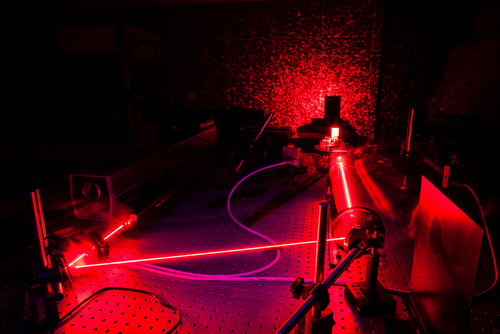
QDL: The Latest Telecommunications Breakthrough

The quantum dot laser, otherwise known as QDL, is a semiconductor laser that uses quantum dots as an active laser medium in its light emitting region. The QDL uses a laser host material which is typically low-loss, striae free, and optically clear. Disposed in the laser host material are a multitude of quantum dots; quantum dots are very small clusters of atoms (around 5 nanometers in diameter) and are embedded in a material like polymer. A light source energizes the quantum dots in order to induce fluorescence. With a vast number of quantum dots disposed in the host material, the laser forms.
The quantum dots’ fluorescence occurs at wavelengths determined by the type of material and size or diameter of the dot. For example, the fluorescing wavelength of a cadmium selenide (commonly comprised of zinc selenide or telluride) quantum dot has potential to change within a predetermined range by changing its physical diameter.
Application of a pumping source will excite and induce a population inversion of more than 50% in the quantum dots. The quantum dots may consist of all the same size and material (for a single narrow spectral band), different materials, or the same material in different sizes, all in order to get a more broadened range of spectral bands. Combinations exist that can obtain an even broader spectral range. Suitable filtering and tuning can result in very narrow to very broad band width laser outputs; this allows the laser to provide a specific spectral band or a broad band range without the need for much optical and electro-optical tuning/filtering systems. SInce QDL lasers are housed in a polymer, they are generally not bulky or heavy.
For more information on this or any of our services, please contact us.






